A Breastmilk Theory of Love
A Breastmilk Theory of Love: Relationships, Love and Mothering
Does our infant feeding experience affect how we relate to relationships? Is there a template for love laid down in early life that creates unconscious patterns that lead to either healthy or dysfunctional connections? Hear what a Wholistic Sexuality educator, former nurse-midwife and intimate arts counselor thinks about the deep connections between the breast and the heart.
If we’d had our needs met, completely and efficiently, with love, security and nourishment all coming together from the abundant breast of a loving mama—would it be easier as adults to form secure and trusting love relationships? To not be possessive and jealous? To trust in the abundance of love and that our beloved(s) will be there when we need them? To be able to receive pleasure? I believe it would.
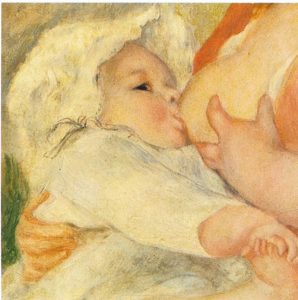 The Bountiful Breast
The Bountiful Breast
Ah, breastmilk, Mother Nature’s most perfect food, the true nectar of the Goddess. Evolution has developed an exquisite arrangement for nurturing young mammals, perfected through millennia. It is an elegantly simple system, based on supply and demand. A human breast is essentially a milk factory. When a baby sucks on the areola of the breast, it stimulates receptors which tell the breast (via the brain) to respond by producing milk. As the infant grows and its caloric needs increase, the baby gets hungrier and sucks more, producing more milk. Despite myths to the contrary, the breast is never empty. There is an endless supply of milk, always as much as a child needs. As long as the system is not interrupted, and the mother is adequately hydrated and nourished, there will always be an abundance of glorious milk.
Magic Milk
Mammalian milk has evolved to meet the highly specific needs of each particular species. Human milk contains the exact nutrients in the perfect balance to grow the complex brains and bodies of our infants. It contains living immune factors to protect the health of the child. It teaches both our immune system and our metabolism how to function properly for the rest of our lifetimes by mechanisms that are still poorly understood. Children who are breastfed for a year (or ideally two or more) suffer from less of every known disease, not just as infants but throughout their entire lifetime.
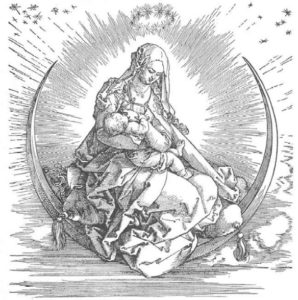 Relationship 101
Relationship 101
Sweet and plentiful breastmilk is the perfect food, always ready, warm and delicious. And it comes in an attractive and time-tested package, that of the woman’s breast, firmly attached to the warm, soft, breathing, pulsating body of the mother. This perfect food is delivered from within the context of the first love relationship that the baby knows. This is how evolution set up the system. When the baby human feels one of its basic needs, that of hunger, the need is met, not with an external object, but by their own personal Beloved. Fed from her warm yielding body, cradled in her strong arms, enveloped in her scent, her loving touch, steadied by her heartbeat and breathing, gazed at by bliss-filled eyes. Ideally, the human need for food is answered in the context of a relationship, by a person, with love.
Sad Stand-in
For those who truly cannot breastfeed, it’s good that we have a substitute that’s at least adequate to prevent significant infant mortality. And, of course, a bottle can be given while the baby is held lovingly in arms. But nothing from a factory can come close to replicating a system that evolution has perfected.
Unfortunately, many modern industrial culture women believe that they can’t nurse, don’t have enough milk and that their body has failed. The truth is that it is our system that has failed them. In nature, it would be extremely rare for a woman (or any other mammal) to not be able to adequately nourish her child unless she’s starving. In our bottle-feeding culture many women have unsuccessful nursing experiences because the natural process, which certainly begins before and during labor as well as after, has been repeatedly disrupted in multiple ways. The result is that the elegant system is too disturbed to function properly and nursing doesn’t work despite many women’s heroic efforts to fix it. This is more then a shame, this is a tragic epidemic as the dysfunction of this system has so many sad consequences.
The Barren Bottle
Compare the perfect sweetness and ideal nourishment of breastmilk to the synthetic formula given to most of us as children and to many babies even now. Artificial infant formula tastes nasty, like wallpaper paste. It’s often given in a transparent bottle, clearly in a finite amount. When the bottle is empty, that’s it. It’s all gone. There is no more. The need for food is met, not in the context of a warm and loving relationship, from a soft and sensuous mother’s body, but with a ‘thing’, a hard and separate object. This is so removed from the context of relationship that it need not even be given while the child is held. A bottle can be propped up or self-held by an older baby.
Terrible Templa te
te
This forms the template for love and attachment that many of us struggle with for the rest of our lives. Is it any wonder that so many people in our culture, as adults, look to consumer goods, to external objects, to satisfy their oh-so-human needs? But more stuff is never enough to really fill those needs. So we go out and buy more stuff, newer stuff, bigger stuff, better, faster, sexier stuff. More, more, more. But it’s really no good. No matter how much we accumulate, objects will never satisfy our needs for love, security and acceptance. Only relationships can do that.
Sick Substitute
Moreover, artificial infant feeding formulas are unhealthy and barely adequate substitutes that can’t come close to Mama Nature’s perfect food. Indeed, they cause innumerable infant health problems, including gastrointestinal distress, allergies, irritability and malaise. Food, nourishment and the associated feeling of love can become deeply connected with feelings of sickness and pain.
Life Lessons
In our first few years we learn some of our most basic life lessons. Is the world a good or bad place? Am I loved? Can I trust that my needs will be met? Is my body a good place to be in?
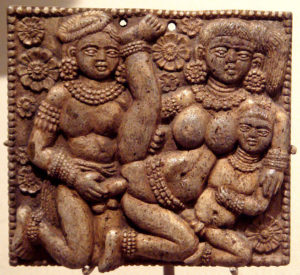 Should we be surprised that so many people have mixed up feelings of love and desire with pain and dysfunction? After all, for most of us our first model of relationship taught us that food and comfort come from an object that is separate from another body. That satisfying our hunger is likely to make us feel uncomfortable and even ill. We learned that nourishment is finite in amount and unpleasant tasting to boot. It’s no wonder that we feel that love is a limited commodity with only so much to go around. It’s not surprising that we can’t get comfortable and form trusting relationships with others. Is that why it’s so hard for some people to receive pleasure? Scarcity consciousness and bottle-fed limits are deeply ingrained templates. Bottle-contained artificial infant formula, unsatisfying, toxic, and unpalatable has confused us about the nature of love.
Should we be surprised that so many people have mixed up feelings of love and desire with pain and dysfunction? After all, for most of us our first model of relationship taught us that food and comfort come from an object that is separate from another body. That satisfying our hunger is likely to make us feel uncomfortable and even ill. We learned that nourishment is finite in amount and unpleasant tasting to boot. It’s no wonder that we feel that love is a limited commodity with only so much to go around. It’s not surprising that we can’t get comfortable and form trusting relationships with others. Is that why it’s so hard for some people to receive pleasure? Scarcity consciousness and bottle-fed limits are deeply ingrained templates. Bottle-contained artificial infant formula, unsatisfying, toxic, and unpalatable has confused us about the nature of love.
If we’d had our needs met, completely and efficiently, with love, security and nourishment all coming together from the abundant breast of a loving mama—would it be easier as adults to form secure and trusting love relationships? To not be possessive and jealous? To trust in the abundance of love and that our beloved(s) will be there when we need them? To be able to receive pleasure? I believe this is true.
Reframing Scarcity and Embracing Abundance
For myself, I’m trying to re-frame my beliefs about love and attachment, about scarcity and abundance, from a breastmilk perspective. It’s remedial education, to be sure. It’s a process that requires practice and repetition to succeed at changing (or at least influencing) such old core beliefs. I’m rethinking love, in the breast-milk model. I’m granting myself my d enied birthright, reminding myself, over and over, and over again that there is an abundance of love, there’s always as much as you need and plenty to go around. And that if you need more, just suck and more will come. The breast is never empty, just like the heart. There is always enough. And my hunger can only truly be satisfied by human relationships, never by things. True milk, like true love is plentiful and nourishing, never finite or toxic. And it tastes really, really good.
enied birthright, reminding myself, over and over, and over again that there is an abundance of love, there’s always as much as you need and plenty to go around. And that if you need more, just suck and more will come. The breast is never empty, just like the heart. There is always enough. And my hunger can only truly be satisfied by human relationships, never by things. True milk, like true love is plentiful and nourishing, never finite or toxic. And it tastes really, really good.
No wonder the breasts are right over the heart. It is where love comes from. Endlessly, without limits, because the breast is never empty and the heart can always give more love. Read more
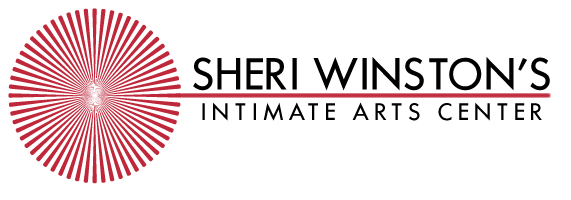



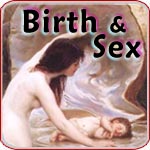



 I love that Huff Post is showing “
I love that Huff Post is showing “